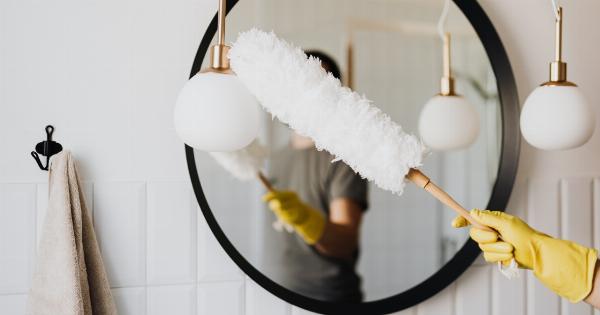When it comes to our health, we often overlook the cleanliness of our beds. We spend a significant amount of time in bed, sleeping, and resting to recharge our bodies.
However, our cozy haven can become a breeding ground for pesky bed viruses if not properly maintained. Bed viruses can cause a range of health issues, including allergies, skin infections, and respiratory problems. To ensure a safe and healthy sleeping environment, follow these 8 easy tips to prevent bed viruses.
1. Wash Your Bedding Regularly
One of the primary ways viruses spread is through contact. Dust mites, allergens, and pathogens can accumulate on your bedding over time. Washing your sheets, pillowcases, and blankets in hot water once a week can help eliminate these unwanted intruders.
Use a gentle detergent and consider adding a few drops of tea tree or lavender essential oil to enhance the antimicrobial effect.
2. Vacuum Your Mattress and Pillows
Regularly vacuuming your mattress and pillows can remove dirt, dust mites, and dead skin cells, which are all potential sources of bed viruses.
Use the upholstery attachment of your vacuum cleaner and go over the entire surface of your mattress and both sides of your pillows.
3. Protect Your Mattress and Pillows
Investing in mattress and pillow protectors can act as an additional layer of defense against viruses. These protectors create a barrier that prevents allergens, dust mites, and bed viruses from penetrating into the fabric of your bedding.
Look for protectors made of hypoallergenic materials for added protection.
4. Avoid Eating or Drinking in Bed
While it might seem cozy to enjoy a snack or a cup of tea in bed, doing so increases the risk of spills and stains. Any food or beverage residue left behind can attract pests and bacteria, which could then lead to the spread of viruses.
Stick to consuming food and drinks in designated areas outside of the bed.
5. Keep Pets Off the Bed
Although we love snuggling up with our furry friends, allowing them on the bed exposes us to their dander, fur, and potential parasites. Pets can carry various viruses and bacteria, which can easily transfer onto our bedding.
Train your pets to sleep in their own designated area to minimize the risk of contamination.
6. Change Your Pajamas Regularly
Just like your sheets, your pajamas can harbor viruses, bacteria, and sweat. Changing into fresh, clean pajamas before going to bed can prevent the accumulation of contaminants on your bedding.
Choose pajamas made of breathable fabrics that allow your skin to stay cool and dry.
7. Air Out Your Bedding
Proper ventilation is essential in preventing the growth of viruses. When you wake up, take a few minutes to pull back your bedding and let the air circulate around your mattress and pillows.
This will help reduce moisture, making it less favorable for viruses to thrive.
8. Replace Old Pillows and Mattresses
Pillows and mattresses have a lifespan. Over time, they accumulate allergens, dust mites, and viruses that are nearly impossible to completely eliminate.
If your pillows or mattresses are more than 7-10 years old, it’s time to consider replacing them. Investing in new bedding can significantly improve your sleep quality and reduce the risk of bed viruses.































